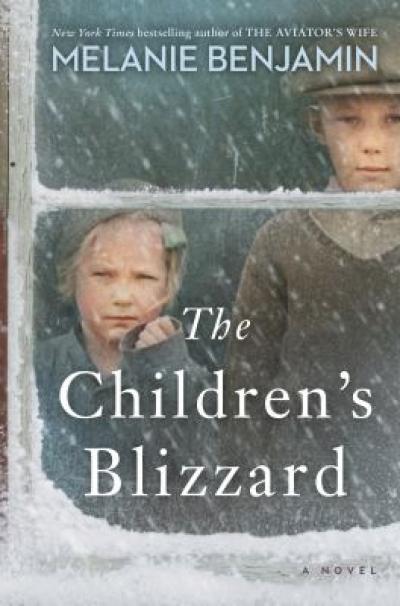
Imagine being stuck out in Winter Storm Elliott, the “bomb cyclone” that gripped much of the country just before Christmas with its gusty winds and arctic temperatures.
Now, imagine that you were a teacher, living on the Great Plains in the late 1880s. The day had started out rather mild, and most of your pupils came to school without their heavy winter clothing. A storm like Elliott strikes, with little warning due to a lack of weather forecasting during the era, just in time for dismissal. You are faced with the decision whether to keep your students at the schoolhouse where you may not have enough fuel to keep them warm, or let them try to outrun the ferocious blizzard.
That’s exactly what happened on January 12, 1888, when a weather phenomenon much like Elliott – a collision of cold, dry air from the north with moist, warm air from the south – struck Nebraska and the Dakota Territories.
That winter storm, which has come to be known as The Children’s Blizzard, is the basis for a novel by the same title penned by Melanie Benjamin that is Alliance’s One Book One Community selection for 2023.
Based on actual oral histories of survivors, the novel follows the stories of Raina and Gerda Olsen, two sisters, both schoolteachers – one who becomes a hero of the storm, and one who finds herself ostracized in the aftermath of the “ground blizzard,” which didn’t produce a lot of snow but mobilized snow on the ground to create whiteout conditions.
“Well, to me one of the main points of the book is how these were ordinary people caught up in extraordinary circumstances,” said Benjamin. “One decision made in a moment of terror meant some people survived while others didn’t. I am fascinated by that, personally.”
The Children’s Blizzard is also the story of Anette Pedersen, a servant girl whose miraculous survival serves as a turning point in her life and touches the heart of Gavin Woodson, a newspaperman seeking redemption. It is Woodson and others like him who wrote the embellished news stories that lured immigrants across the sea to settle the pitiless Great Plains.
Like Woodson, Anna Pedersen, Anette’s caregiver, was transformed by the storm despite not being actually in it.

“The storm was bigger than anyone on that prairie,” says Benjamin, explaining the novel is based on accounts of real survivors but the story is her invention. “It roared through, and upended lives forever. Gavin and Anna are two examples of characters who weren’t trapped in the storm like some of the other characters in the book. Yet they both found, to their surprise, that it upended their lives, perhaps even more drastically than those who were caught in it.”
Full of twists and turns, the story is one that keeps readers intrigued and captivated as the characters navigate the storm, which lasted 12 to 18 hours amid sub-zero temperatures and winds of 60 miles per hour.
The storm, which led in part to the creation of the United States Weather Bureau in 1890, killed at least 235 people, possibly as many as 500, according to some estimates. Many were immigrant children coming home from school.
“I think it’s a survival novel, for sure – something like Jack London, man against nature,” says Benjamin, “But it’s also full of human drama and the power of love and forgiveness. I really tried to find the beauty, the hope, the redemption in some of their stories, to balance the tragedy. That’s what I hope people will come away from, after reading; how love can help mitigate the most unimaginable loss, how people coming together, instead of tearing each other apart, is what will save us in the end.”
Several programs will be held ahead of Benjamin’s visit and will be announced in the coming weeks.
